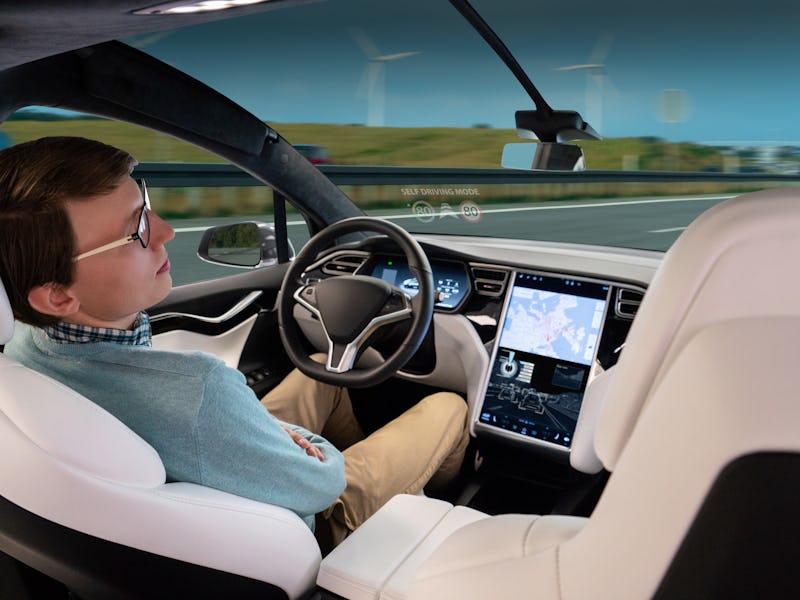Elon Musk sells an enviable future for self-driving cars
Tesla CEO Elon Musk has suggested how the company's self-driving car technology could change the way people use vehicles.

Tesla's full self-driving software could lead to a rethinking of how people use their vehicles, CEO Elon Musk has suggested.
During the company's second-quarter 2020 earnings call on July 22, Musk explained how Tesla is thinking about future changes to its vehicles.
The company is currently developing its semi-autonomous Tesla Autopilot system, which uses a series of sensors and cameras to drive the vehicle in a limited number of circumstances. A "feature-complete" version is expected to drive the car from A to B with human oversight, a stepping stone to a fully driver-free version.
Musk explained in the call that full self-driving could require a rethink of how people use the car:
"When things do become full self-driving, what are people going to do in the car? Well, I guess they're probably gonna do productivity and entertainment of some kind. You know, watch movies, play games, and do work. But that's in the future. We're already putting some games and stuff in the car, just for fun."
The comments are a key indication that Tesla is considering how best to support drivers inside the car, free from the monotony of driving. Tesla has been gradually adding more entertainment features to its in-car touchscreens. Software version 10.0, released in September 2019, added a new "car-aoke" feature for sing-alongs, as well as a Tesla Arcade that features beloved games like platformer Cuphead.
Zach Kirkhorn, Tesla's chief financial officer, confirmed that Tesla sees full self-driving as the basis for bigger and better things:
"FSD remains by far and away the biggest opportunity in the near term. But we're putting the plumbing in place to be ready to scale other areas when the time is right."
The comments fit with how other experts have considered the role of the autonomous car in the future. Jeffrey Tumlin, director of strategy at Nelson/Nygaard, told Inverse in November 2016 that the autonomous car could serve as an ideal advertising opportunity due to a captive audience seeking entertainment. The self-driving car could power new businesses on wheels, Tumlin explained.
But so far, Tesla has been relatively restrained in revealing how autonomy may transform the interior. In May 2017, Musk explained that “I don’t think we’re going to see a dramatic change in the interior design," adding that "there might be an option for club seating instead of everyone facing forward, but I wouldn’t call that radical, just turn the seats around.”
The Tesla Model 3 released in July 2017 dropped the instrument cluster from behind the wheel, a move Musk claimed was because the cluster becomes less important in an autonomous vehicle.
A steering wheel-free Tesla as unveiled at the company's shareholder meeting.
Unlike other automakers, Tesla has avoided releasing concept art showing changes to the interior. The main exception to this is a concept image in 2019 that showed a car without a steering wheel. By contrast, Volkswagen released an image of an I.D. Buzz hippie van in 2017 where the seats could swivel round and enable passengers to socialize.
Later on in the call, Musk suggested the company would have to consider how it sold the software package to would-be buyers.
"The step-change to full self-driving, depending upon how you calculate it, is probably worth at least $100,000 per car," Musk said. "So that's a lot of software you have to sell."
The Inverse analysis – Tesla has detailed plans to use its autonomy in a number of interesting ways. It's outlined a robo-taxi service that can pick up and drop off passengers, enabling cars to earn money for their owners. It's also described a voice-activated driving system that could take people home.
But in terms of design, Tesla has so far shown restraint. Musk's latest comments show the company is considering that the way people use their vehicles will change, and steps like Tesla Arcade help address these questions in the early stages.
Perhaps it's just as well that Tesla has held off from anything more radical. One of Tesla's big strengths has been designing electric cars that don't look out of place in a lineup of traditional vehicles, encouraging drivers to go electric. When it comes to autonomy, familiarity may be the best approach to encouraging broader adoption.
This article was originally published on